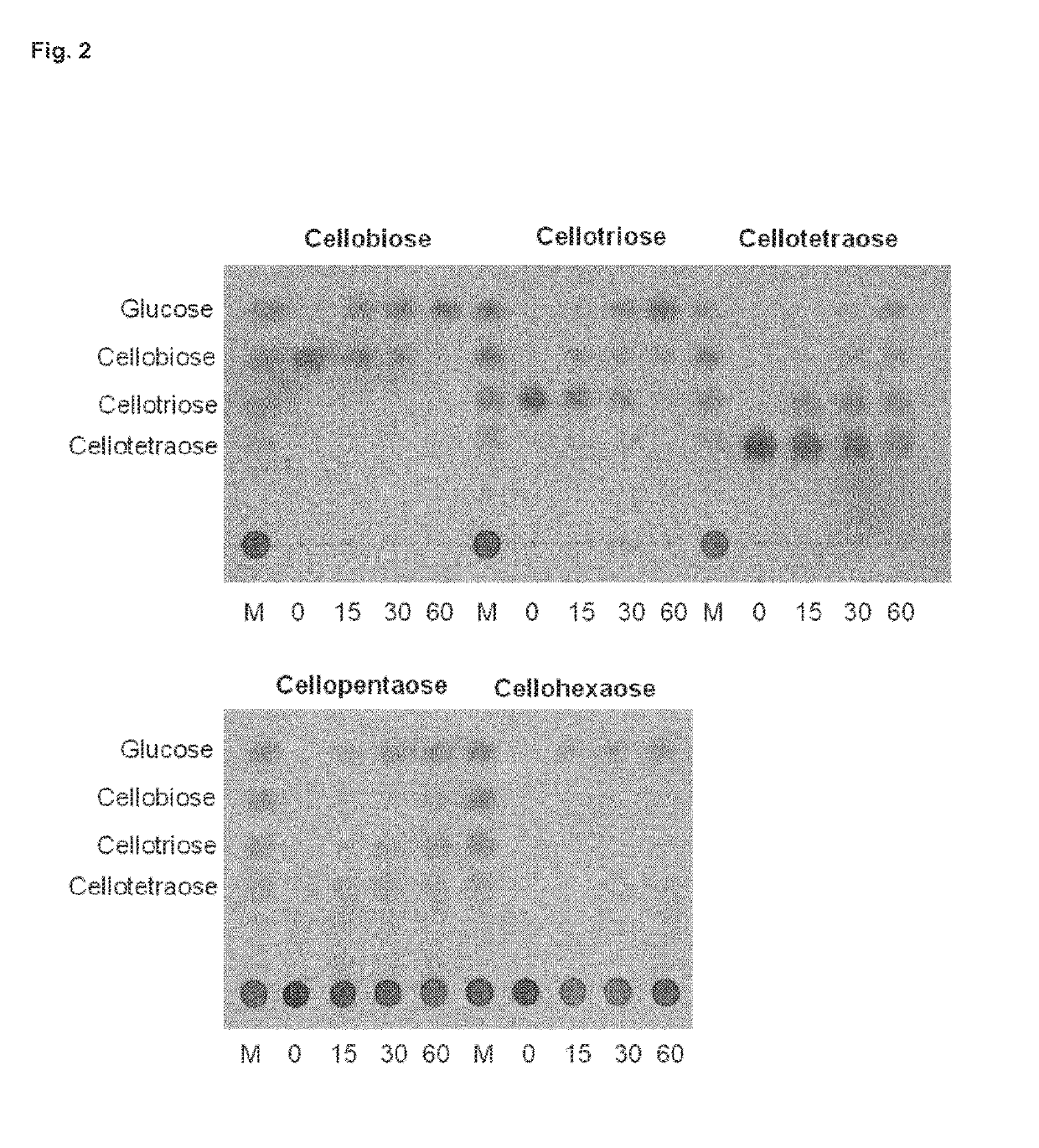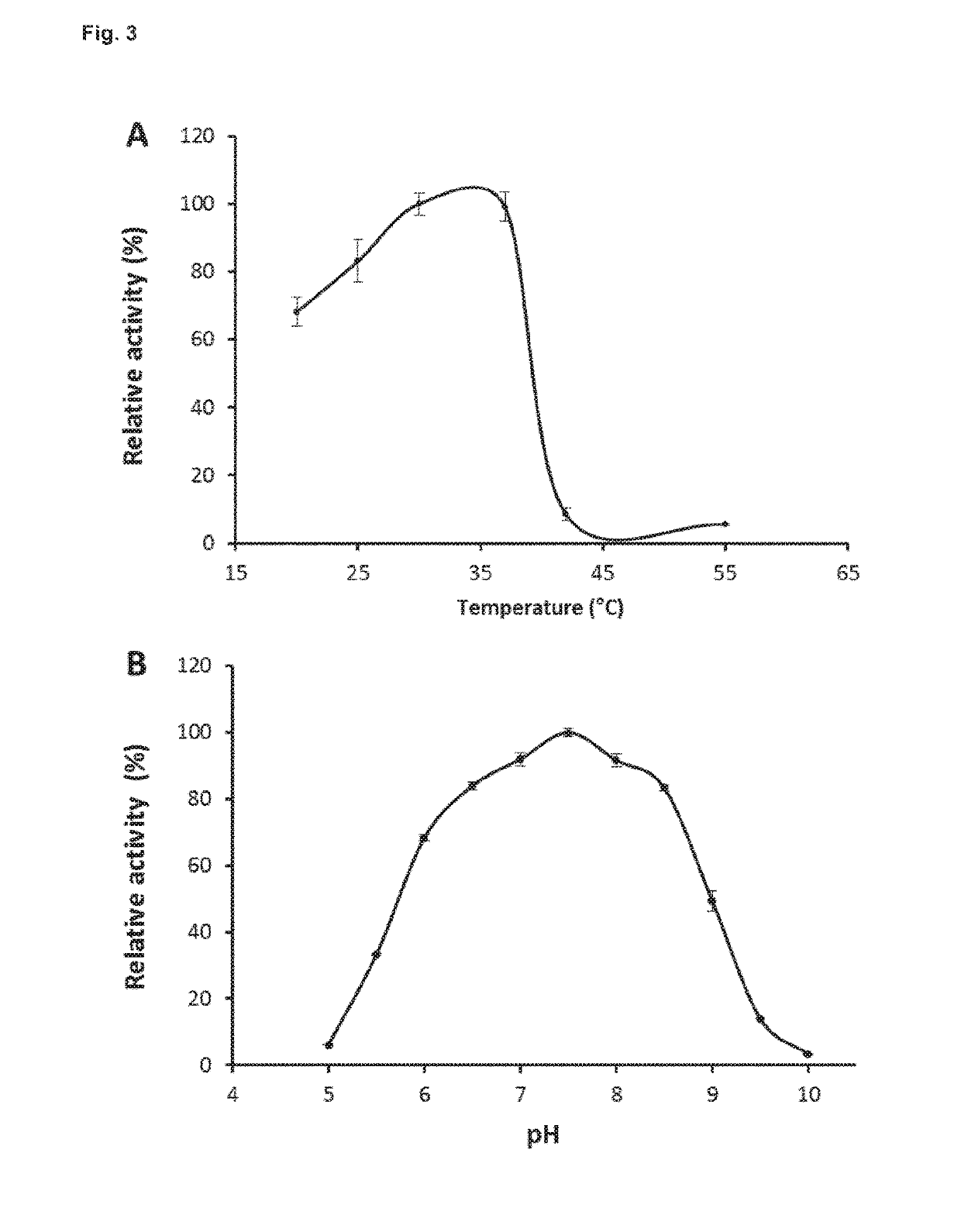Use of a sugar tolerant beta-glucosidase
a beta-glucosidase, sugar-tolerant technology, applied in the field of enzymes, can solve the problems of reducing the overall rate of hydrolysis and often reported unwanted events in lignocellulosic biomass hydrolysis, and achieve the effect of high-effective hydrolysis of lignocellulosic substrates and releasing aroma in plant-derived products
- Summary
- Abstract
- Description
- Claims
- Application Information
AI Technical Summary
Benefits of technology
Problems solved by technology
Method used
Image
Examples
examples
Materials and Methods
[0121]Production and Purification of Histidine-Tagged Recombinant Beta-Glucosidase of Streptomyces scabies 87-22.
[0122]The open reading frame encoding SCAB57721 (hereafter named BglC) was amplified by PCR using primers scab_57721+3_NdeI (TTCATATGCCTGAACCCGTGAATCCGG) and scab_57721_+1458 HindIII (TTAAGCT7TGGTCCGTCGCTGCCCTACG). The corresponding PCR product was subsequently cloned into the pJET1.2 / blunt cloning vector, yielding pSAJ021. After DNA sequencing to verify the correct amplification of scab57721, an NdeI-HindIII DNA fragment was excised from pSAJ021 and cloned into pET-28a digested with the same restriction enzymes leading to pSAJ022. All plasmids used and generated are listed in Table 1.
TABLE 1Bacterial strains and plasmids used in this studyPlasmids andSource orstrainsDescription†referencePlasmids orcosmidspJET1.2 / bluntE. coli plasmid used for high-efficiency cloning of PCRThermo Scientificproducts (AmpR)pET28aExpression vector used to produce N-termin...
PUM
| Property | Measurement | Unit |
|---|---|---|
| Fraction | aaaaa | aaaaa |
| Fraction | aaaaa | aaaaa |
| Fraction | aaaaa | aaaaa |
Abstract
Description
Claims
Application Information
 Login to View More
Login to View More - R&D
- Intellectual Property
- Life Sciences
- Materials
- Tech Scout
- Unparalleled Data Quality
- Higher Quality Content
- 60% Fewer Hallucinations
Browse by: Latest US Patents, China's latest patents, Technical Efficacy Thesaurus, Application Domain, Technology Topic, Popular Technical Reports.
© 2025 PatSnap. All rights reserved.Legal|Privacy policy|Modern Slavery Act Transparency Statement|Sitemap|About US| Contact US: help@patsnap.com



